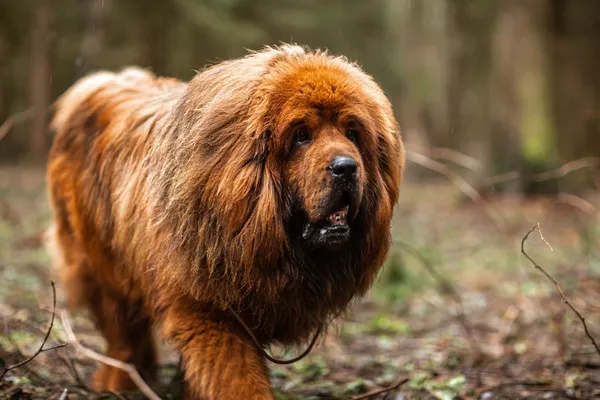Tibetan Mastiffs are a powerful and majestic breed of dog that were originally bred in Tibet to protect livestock and homes from predators. Their thick coat and large size make them well-suited for cold weather, but how well can they actually handle it? In this article, we will explore the adaptability of Tibetan Mastiffs to cold weather and what you can do to ensure that your dog stays healthy and comfortable in cold temperatures.
The Nature of Tibetan Mastiffs
Tibetan Mastiffs are a breed that is well-suited to cold weather. Their thick coat and large size make them well-insulated against cold temperatures, and their protective nature makes them well-suited for guarding homes and livestock in harsh environments. However, like all breeds, Tibetan Mastiffs require proper care and attention to ensure that they stay healthy and comfortable in cold weather.
Adaptability to Cold Weather
Tibetan Mastiffs are a breed that is well-adapted to cold weather. Their thick coat provides insulation against cold temperatures, and their large size helps to retain body heat. However, like all dogs, Tibetan Mastiffs can still be susceptible to cold weather-related health issues, such as hypothermia and frostbite.
Factors to Consider When Exposing Tibetan Mastiffs to Cold Weather
When exposing your Tibetan Mastiff to cold weather, there are several factors to consider:
Coat: The thickness and quality of your Tibetan Mastiff’s coat can affect their ability to handle cold weather. A thick, dense coat will provide more insulation against cold temperatures, while a thin or sparse coat may not provide enough protection.
Age: Older Tibetan Mastiffs may be less able to handle cold weather than younger dogs. Older dogs may have weaker immune systems and may be more susceptible to cold weather-related health issues.
Health: The health of your Tibetan Mastiff is an important factor to consider when exposing them to cold weather. Dogs with health issues may be more susceptible to cold weather-related health issues, such as hypothermia and frostbite.
Activity Level: The activity level of your Tibetan Mastiff can affect their ability to handle cold weather. Dogs that are more active may generate more body heat and be better able to handle cold temperatures.
Environment: The environment in which your Tibetan Mastiff is exposed to cold weather is also an important factor to consider. Dogs that are exposed to cold temperatures in a safe and secure environment may be better able to handle cold weather than dogs that are exposed to cold temperatures in an unfamiliar or dangerous environment.
Tips for Keeping Tibetan Mastiffs Comfortable in Cold Weather
If you live in a cold climate and own a Tibetan Mastiff, there are several things that you can do to ensure that your dog stays healthy and comfortable in cold weather:
Provide Adequate Shelter: Make sure that your Tibetan Mastiff has access to a warm and dry shelter when outside in cold weather. The shelter should be large enough for your dog to stand up, turn around, and lie down comfortably.
Use Protective Clothing: Consider using protective clothing, such as a coat or sweater, to provide additional insulation for your Tibetan Mastiff in cold weather.
Monitor Your Dog’s Behavior: Watch for signs of discomfort or distress in your Tibetan Mastiff when exposed to cold weather. Signs of discomfort may include shivering, whining, or seeking shelter.
Provide Adequate Nutrition: Make sure that your Tibetan Mastiff is receiving adequate nutrition to maintain their energy levels and body temperature in cold weather.
Exercise Indoors: Consider exercising your Tibetan Mastiff indoors during extreme cold weather to prevent them from being exposed to dangerous temperatures.
Keep Your Dog Hydrated: Make sure that your Tibetan Mastiff has access to fresh water at all times, even in cold weather. Dehydration can be a problem in cold weather, and dogs need to stay hydrated to maintain their body temperature.
Conclusion
Tibetan Mastiffs are a breed that is well-suited to cold weather, but they still require proper care and attention to ensure that they stay healthy and comfortable in cold temperatures. Factors such as coat thickness, age, health, activity level, and environment can all affect a Tibetan Mastiff’s ability to handle cold weather. By providing adequate shelter, using protective clothing, monitoring behavior, providing adequate nutrition and hydration, and exercising indoors during extreme cold weather, you can help your Tibetan Mastiff to stay healthy and comfortable in cold weather. With proper care, your Tibetan Mastiff can thrive in even the coldest of climates.


